|
|
|
 |
|
|
Speakers:
You walk into a room and identify it by the speaker on display. Hard not to; speakers are the sex objects of the phat 24K gold audio chain.
|
|
|
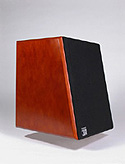 |
I would never suggest that you cannot get a better speaker than either the Eminent Technology LFT VIII or the Reference 3A - but you can build a pretty damn good and musically satisfying system around either.
I heard the Reference 3A in three different setups. It was warm and cozy but inadequately dynamic, resolved or detailed when paired with the Audiozone amps. It sounded full and weighty, but somewhat unrefined with tubes from Antique Sound Labs. Neither setup revealed just how much the speaker is capable of. For that, one had to catch the after-hours listening session in the Reimyo room when the boyz from May Audio were able to borrow a pair of Reference 3As from their neighbors across the hall.
Here the pairing with $15K worth of digital and $40K worth of electronics gave ample indication of just how much speaker is hiding below the surface of the little Reference 3A. Again, I'm not suggesting that this is the kind of balance one should strive for in putting together a system, but I firmly believe that a well-balanced and neutral speaker does not have to be expensive. A really good one like the Reference 3A responds to ever-better upstream equipment before it finally is completely outclassed. The Da Capo looks like it should be sitting on top of a full-range bass unit like the Watts's Puppy. I have no idea if there is a Puppy in the works - but there should be.
The boys from Reference 3A in fact seem to be moving in a different direction. The new $1.7K/pr mini-DaCapo Dulcet promises to be among the great bargains in HighEnd.
The LFT VIIIs have been around forever. They don't look great and they are power-hungry monsters; not quite as hungry as Soundlabs but in the same family of watt and current eaters as Magneplanars. Maggie 1.6QR make a nice comparison with the ETs. The former are more coherent; the latter more dynamic and extended. Both have a wonderfully natural midrange, both are a tad dark on top. The ET is a bit more refined. It also has provisions for tuning the sound to your room. The LFT VIII goes for under $2K, the Reference 3A for less than 3$K - spectacularly good bargains each, yet very different in terms of appearance, musical presentation and thirst for power.
Speaking of Maggies, I heard the 3.6R in a small room that did not give them adequate room to breathe. Still, they have such a wonderfully natural sound that not even this room could fully obscure it. Many partial and fully horn-loaded designs were in evidence at the show this year. Since I had spent six full years listening pretty much exclusively to horns, I was anxious to rediscover how they sounded; what changes if any had transpired since I began my -- no doubt temporary -- leave of absence from life with horns. For the purposes of this report, I will treat any speaker with at least one horn-loaded drive element as a horn loudspeaker.
A modified version of the Zingali horn-loaded speaker was doing duty in Victor Goldstein's Fanfare room in the St.Tropez and in another Alexis Park suite featuring Lloyd Walker's turntable. In both rooms, the Zingali was driven by Viva 845 monoblocks. The Zingali had the most naturally dynamic midrange I have experienced. The pairing with the 845 amps made it somewhat difficult to draw conclusions about its ability to reproduce the upper frequencies. The sound was a bit dark but incredibly involving, dynamic and musical.
I have heard the Cain & Cain Abbey (which is a Voight pipe and not a horn) sound wonderful in several settings and so was surprised by how disappointing both the single and double-horn BEN sounded at the show. Cain & Cain speakers were in several rooms but did not impress in any I visited. Because I have heard the Cains sound good elsewhere, I'm reluctant to draw conclusions. I found that the supertweeter did not integrate especially well with the back-loaded Fostex driver, with the net effect being that the tonal balance was shifted up and there was a corresponding difference in speed between the high and low frequencies that was not overcome in the rooms in which I heard the speaker.
I have never owned or heard a Lowther that did not have a peak in the upper midrange. And in my experience, owners of Lowther-based speakers who remain happy with them over the long haul end up pairing them with amplifiers that are a bit rolled off. I was able to listen to two implementations of the Lowther at the show in both the Rethm and Horning exhibits. I was quite impressed by the Rethm. Paired with Audion 300B amps and a Heart (modified Marantz) CD player, the Rethm produced a glorious midrange and quite convincing lower midrange and upper bass. There was no low bass to speak of in the room, but a good deal, if not all, of the upper midrange glare of the Lowther was eliminated. I am sure the source of the brightness was not the Audion amps, but it might well have been the CD player. Jacob George of Rethm has done an admirable job of modifying the Lowther driver setup to maintain its immediacy while eliminating its major shortcomings.
The Rethm should be on the short list of anyone looking for a full-range single driver loudspeaker to mate with a single-ended triode amp. I am told that two Rethm models are in house somewhere among the local moonies. I've sworn off horns for a while, but this is one I would be interested in listening to. Another interesting implementation of the Lowther driver is the Horning horn. At the show, the speakers were driven by Tom Evans electronics -- the wonderful Vibe and Groove preamp combination -- and the new Soul series amplifier. Analogue front end duties were handled by the intriguing Kuzma with linear tracking tone arm. The sound was effortless and detailed. Every product in the room bore some genuine interest and warrants further attention. The sound was a bit forward, but not bright or aggressive.
I had a similar reaction to the quite gorgeous Amphion Krypton. At first, the sound was very present and powerful if a bit forward - as though the speaker needed more break-in. When I returned to the Amphion room towards the end of the show, the sound had relaxed considerably. The Amphion Krypton is a speaker that bears watching. It may prove to be a real winner especially when paired with mid-powered tube amplifiers.
|
|
 |
|
 |
|
|
 |
|
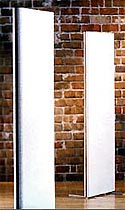 |
|
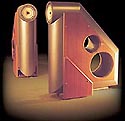 |
|
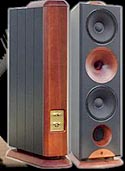 |
|
|
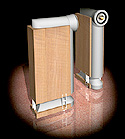 |
|
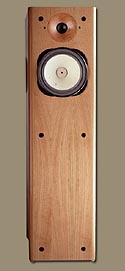 |
|
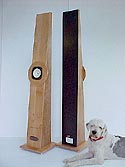 |
|
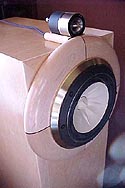 |
|
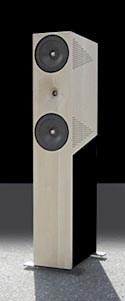 |
|
 |
|
 |
|
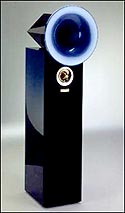 |
|
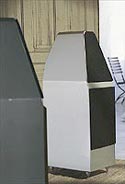 |
|
Several reviewers at 6moons own Avantgarde Duo hornspeakers as their reference. This was the first time I had heard the speakers perform to their press, in two different rooms with very different character. In the Avantgarde Acoustics room, the sound was detailed, dynamic and lively; in the Avantgarde-USA room, the sound was warm, big and lush, less detailed and focused yet very relaxed, very much taking on the character of the BAT amplifiers and digital front-end with which the speaker was paired. By comparison with the Avantgarde Acoustics room, the sound in this room was a bit slow. Different electronics, different sonic signature - that's the way it's supposed to be.
The Avantgarde might be hornspeakers but they require a good deal more power than some might think. My own view? These are not speakers that perform their best with low-powered tube amps, a view that incidentally is shared by many European Avantgarde owners. Think cones, not compression drivers. Think 30 watts, not 3.
Another horn loudspeaker that requires power is the Acapella Violin High. Driven by Ayre and Aesthetix, the Acapella provided my favorite horn sound at the show - but then again, it's barely a horn. The Acapella is a three-way design that includes an ion tweeter, a horn midrange and a dynamic woofer. There are some great tweeters: the RingRadiator; the Revelator; the Esotar; the Gallo. Alas, nothing compares to the ion tweeter for smoothness and extension.
The Acapella Violin High speaker is a technical achievement of the first order, mating three radically different drive units into an incredibly coherent speaker. If you come to play, bring reasonable power with you. Horn or not, this speaker exhibited unrivalled smoothness and suave sophistication. It does not produce a larger-than-life soundstage. It will not bowl you over with visceral dynamics. On the other hand, it does not beam and it most certainly does not shout. This is a speaker for long-term listening. I'd love a chance to do so myself. Hey guys, I've got the perfect amp for it. You've even said so yourself. I'm here, waiting. Just call when you have a chance; if I'm not in, leave a message.
Leaving horns aside, I was anxious to hear dynamic speakers I was more and less familiar with. Of the very familiar, I found the Wilson Watt/Puppy 7 less dynamic than I have heard them elsewhere. On the other hand, they served consistently well in every room in which they appeared. Wilson enjoys the unsurprising status of being an easy target for the underground press and a near untouchable in the conventional press. Neither view seems appropriate. Wilson does a lot of things right yet is not always recognized for doing so.
Still, to be honest, I could not listen long-term to any Watt/Puppy series speaker prior to the System 7. There was always a great deal of detail, but not all of it particularly musical. The speaker went through several iterations in which it was analytical in a HiFi-ish way and had a bass presentation that was a bit slower, darker and unnatural in the opposite way. As the bass was improved by increasing its naturalness and reducing the bump, the rest of the speaker seemed more analytical by comparison.
All this changed for me with the Sophia which is an eminently musical loudspeaker that maintains the vast majority of the Wilson virtues of transparency, dynamics and detail and in doing represents a great value. I own a pair myself. The trend continues in the System 7. These are very good, full-range loudspeakers that pair very nicely with an exceptionally broad range of amplifiers - tube and solid state, medium as well as high powered versions of both.
|
|
|
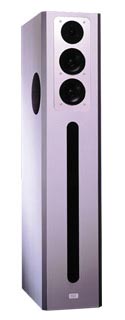 |
|
I'm not sure if I am in the minority among those in the underground press who find the newer Wilsons quite satisfying. Among those who do find the speaker satisfying, however, I fear I am in the minority in wishing that they would replace the inverted dome titanium tweeter. Even as it has been calmed down, it seems to still draw undue attention to itself.
I was very impressed with the potential in the Isophon Europa flagship. The sound was super quick, detailed and dynamic, but ever so slightly on the lean side. I spent a good bit of time with the designer and was impressed by his preference for drivers of natural fibers: cloth, silk and paper. I would have liked to hear the speaker with a reasonably powerful and dynamic tube amp. Something from VTL, Manley or VAC would have been just fine with me.
I have always had a soft spot for ProAc loudspeakers. Well-made, simple and stylish, they have been unfailingly musical. The little 1s and the 2.5 were among my favorites. The 2.5 were not without their flaws. The bottom end was not particularly dynamic, detailed or transparent and the tweeter sometimes sounded like it could benefit from some taming. Paired with the excellent Sugden pure Class A solid state amplifier, the D25 and D38 bettered their legendary precursors in every way while giving up nothing in terms of ProAc's signature musicality. ProAc does not make changes for the sake of doing so. They expect that someone who purchases a ProAc intends to keep it for a long time. So they design their speakers for long term listenability. Imagine that.
I thought there was a good deal of promise in John DeVore's new reference, in the WHT reference imported from Australia by Scott Tarter of CC-Audio, and in all things Dali. Mostly, I wish I had more time to listen.
|
|
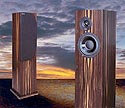 |
|
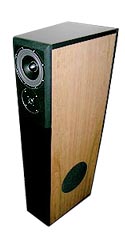 |
|
|
 |
|
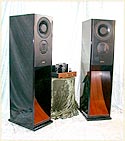 |
|
|
In addition to Soundlab, Quad was showing both the 988 and 989 electrostatics. If the former were flattered by excellent partnering, the latter were let down just a bit by less attention to happy marriage. It's hard not to like listening to Quads; some can imagine listening to nothing else. Others admire Quad but are not romanced by them. I'm somewhere in-between: Romanced by the original 57s (and a few recent versions of them), and largely an admirer of everything else they've done and accomplished.
Compared to Quad and Soundlab, Innersound is a relative newcomer to commercial electrostatic designs. Though Innersound is working on a full-range electrostatic speaker, it has until now manufactured hybrids only, mating a transmission-line-loaded dynamic bass driver to an electrostatic panel element. No other electrostatic speaker (or planar hybrid for that matter) has pulled off the integration as well as Innersound has.
The Innersound folks unveiled new designs in the Aladdin hotel for press members and other invited guests. The new speakers represent evolutionary changes significant enough to warrant name changes from Eros and Isis to Kaya and Kachina. This is what happens when Jersey and Georgia boyz move to Colorado. Though the changes are physically minor, the improvement in sound over previous versions I've heard and owned (the Isis) was not. The midrange opened up a bit, body and dynamics improved but there was no loss of overall coherence and transparency.
|
|
|
|
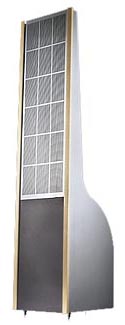 |
|
|
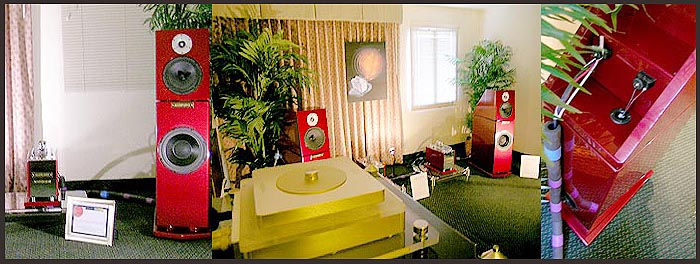 |
|
|
When all was said and done, no loudspeaker impressed me to anything like the extent that the new Audiopax REF100 did. I have never experienced a full-range loudspeaker of such subtlety, nuance and musical detail. The tone and timbre of instruments was very close to spot-on. It is hard to imagine being more drawn into the music than I was in that room. If this experience is repeatable in my room, then count me among those who would view this speaker as not just a ridiculous bargain at nearly $13K, but as something of a minor miracle. I don't normally believe in miracles - other than the New York Mets of 1969. But I'm prepared to believe we're due for another.
I feel a bit like having let both you and other manufacturers down in not giving full or fair coverage to all products heard at the show. Maybe I will throw together a Part IV of odds and ends - once the second law school semester is underway and if I am desperately looking for a distraction.
The next year or so in reviews:
If the show provided me with much to reflect on and many memories to savor, the upcoming year of scheduled reviews whets the appetite and increases anticipation. Other than the Audiopax Reference 100 which should be in house by mid February, I will begin a series of several state-of-the-art turntables reviews.
At this point, I have lined up the TMS from Roksan, the Balance from Brinkmann, the revised Reference from Well Tempered, and the Redpoint from Peter Clarke. I am in negotiations with Pluto and I have a line on the Shindo Player System which is in effect a modern version of the Garrard 301. I expect to make HighEnd turntable reviews a staple of my repertoire - so if your favorite table does not appear on this list, have patience. I'm hoping to get around to it. Better, send me a note with your suggestions and the boss and I will see what we can do about arranging a review. This is a long- term project!
On the digital side, I will soon have in-house the Reimyo CD player by Combak, and will also be reporting on the Audio Logic 24 MXL DAC which is my current reference. On the electronics front, I am in the process of composing my reviews of two extraordinary pieces from the legendary house of Ken Shindo. The reviews of the Shindo Monbrisson full-function preamp and Shindo Sinhonia monoblocks will be their first reviews in an American journal. I hope to have brief access to the only full Shindo system in the States which includes the Latour loudspeaker. I will take lots of pictures and do a sidebar review of the entire Shindo sound - promise. Soon thereafter, I will be taking in the brand-new Reimyo line-level preamp and 300B amplifier. There will be separate reviews of the CD player and the electronics, and another shorter piece which takes the measure of the Reimyo system as a whole. This means that in 2004, I will be able to review nearly complete electronics systems from two of Japan's leading speciality audio design houses.
I have recently completed a review of the Harmonic Resolutions Isolation base for Ultra Audio.Com. The review should appear shortly. Mike Latvis has assured me that as soon as first orders are filled, I will have to review his new equipment rack which represents his attack on the state of the art. I am also working on a review of the Lumen White all-ceramic driver loudspeakers. This review should appear before summer.
As if all this weren't enough to keep even the most jaded reviewer up at night with anticipation, there is reason to believe that at some point during the late spring, the honorable Kiuchi-San of Combak/Harmonix will visit my Connecticut home to spend two days to personally tune my reference system with his assorted magical tools and even more magical ears. I will photograph and report on the entire process and interview Kiuchi-San during his stay. Needless to say, this is yet another 6moons first.
Speaking of 6moons firsts, this was my first CES under the gentle reflected rays of the six moons. In time I will forget the sounds of the show, but the experience itself will always remain vivid for one and only one reason: The incredible pleasure of the company of those I met. I cannot convey to you enough what a treat it is to work with people who walk around with a smile on their faces, who view their task to be one of improving the lives of those they touch. Thanks Srajan (just make sure you end this show report with a smiling picture of both you and Ivette.) See you all again shortly.
|
|
|
 |
|
|
|
(Next time be sure you know what you're asking for, Jules. We both had to get face lifts to take this shot.
Bloody inconvenient - but we do aim to please when it's convenient.)
I cannot end without apologizing in advance to my wife Mimsie for the incredible mess I am going to make of our family room over the next few years...
|
|
|
|
|
 |
 |
|
|
 |
|
|
 |
|
|
|
|
|
|
|
|
|
|
|
|
|
|
|
|
|